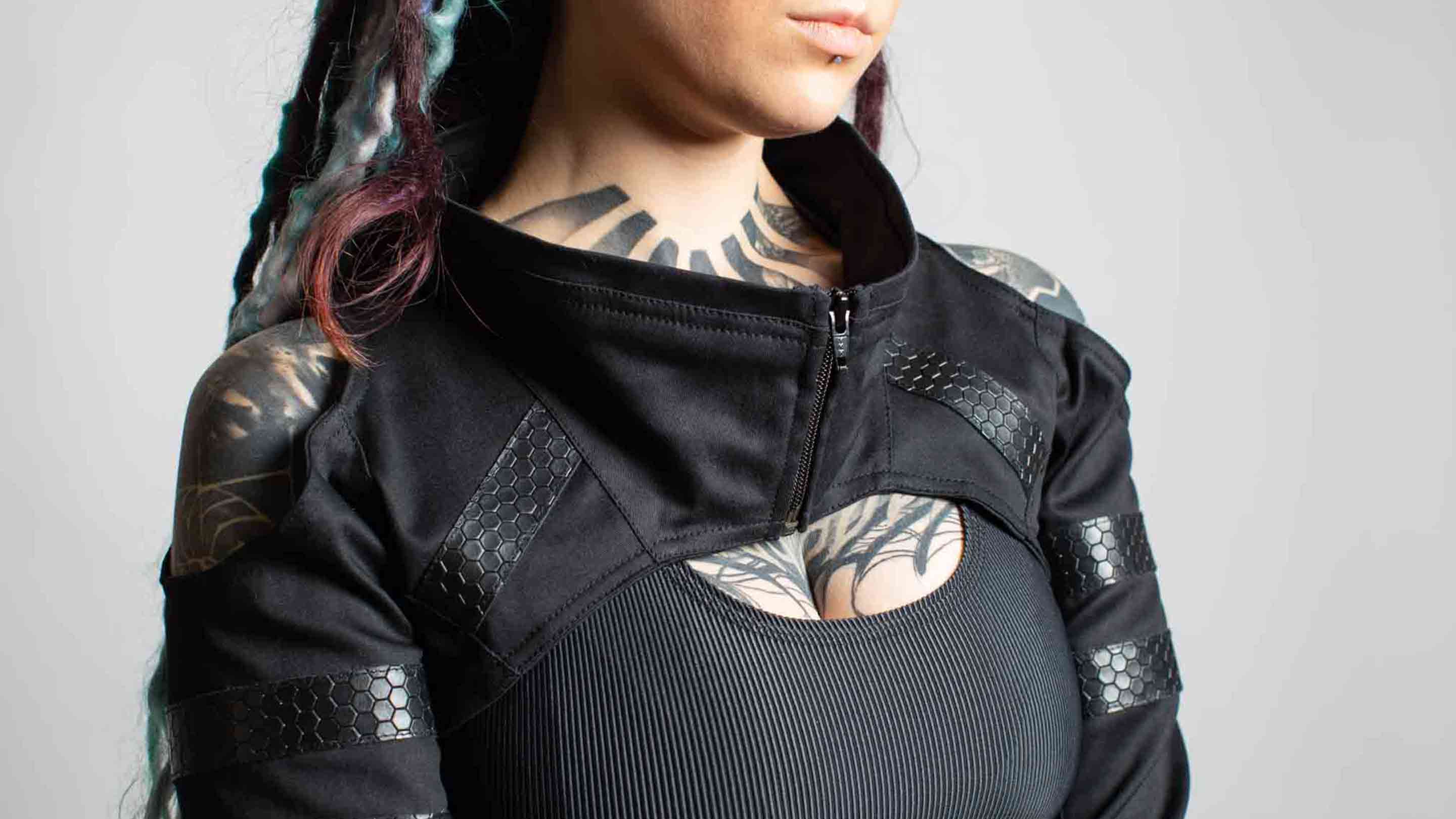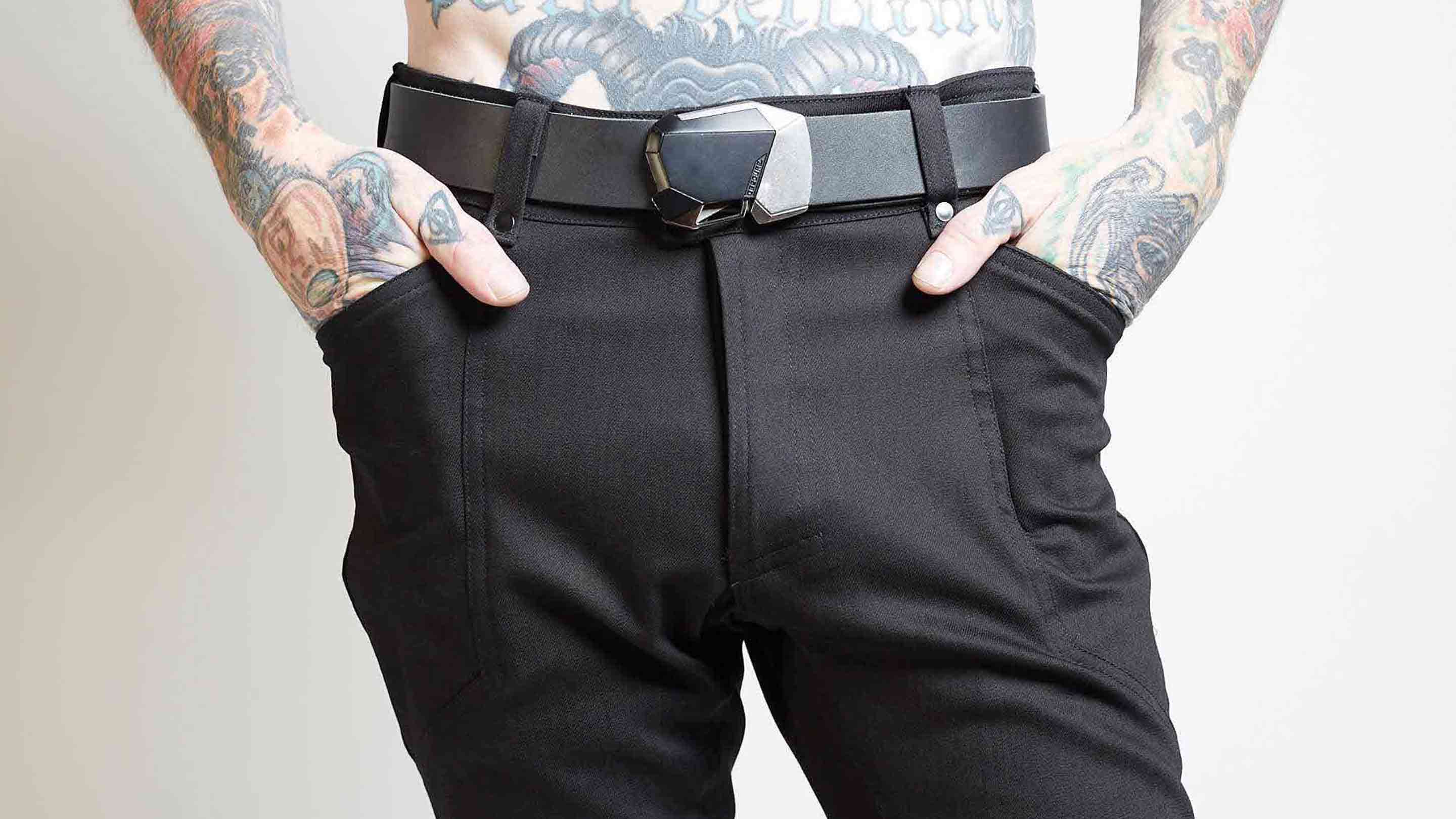The inner workings
Did you know that our designer Matthew Deponte makes 90% of the clothing and stock by himself? We know, it's pretty crazy!

This approach is quite unconventional compared to most fashion brands. Typically, a designer creates a collection, sends it off to a sample/pattern maker, and once approved, the designs go into production. However, at Crisiswear, we do things differently. We are much smaller than you might imagine.
Fueled by caffeine, a relentless work ethic, and unmatched creativity, Matthew is dedicated to pushing the boundaries of traditional apparel. He is classically trained as a designer, illustrator, pattern maker, sample maker, and skilled stitcher. Everything from start to finish is accomplished in-house. Matthew drafts all his patterns by hand, using a roll of pattern paper, various rulers, and a pencil. This is where it all begins, and we'll let him share the finer details.

Matthew:
"Let me start by saying all of the above is true and I think the best way to justify it is to just call it what it is, an unhealthy artistic obsession to create. Now with that being said let’s begin:
Here’s an inside look at my design process for the Crisiswear world. It all begins with rough sketches and concepts, which are gradually refined until the design feels just right and carries weight. You might assume that the next steps involve pattern making and sample creation, and while you're not wrong, it's not necessarily in that order. Pattern making is a meticulous and time-consuming process, especially the way I approach it. I don't use digital tools or patterning software; it's all done in a traditional, old-school analog style.
Depending on the complexity, each pattern can take up to two weeks to complete. The process starts with creating a basic pattern block to ensure the correct cut and fit. Then, a basic sample is made to test the design's transition from 2D to 3D. Many designs don't translate perfectly from paper to physical form, and adjustments often occur during the patterning stage. Once any fit issues are resolved, I finalize the pattern from the block and proceed to grading. Grading involves creating size run patterns from the original, typically encompassing up to eight individual sets of patterns. This part is the most labor-intensive and my least favorite, as it's quite exhausting.
Next, I cut the chosen fabric or fabrics to fully highlight the design. For new styles, we typically produce small runs to test the market and gauge customer interest. To avoid waste, we make only 2 to 4 garments per size, ensuring minimal dead stock if the clothing isn't well received. Depending on the garment's complexity, this process can take up to four weeks to complete.
To put this in perspective: a single pair of our pants generally takes about 3 hours to complete from start to finish. With seven sizes—XXS to XXL—and 2 to 4 garments per size, the total time required ranges from 42 to 84 hours. Cutting multiple garments simultaneously saves a little time, but not as much as one might think.
They say if you do what you love, you'll never work a day in your life. Well, "they" were wrong. In fact, you work harder, sacrifice more, and strive unconditionally to excel in what you do.







Leave a comment